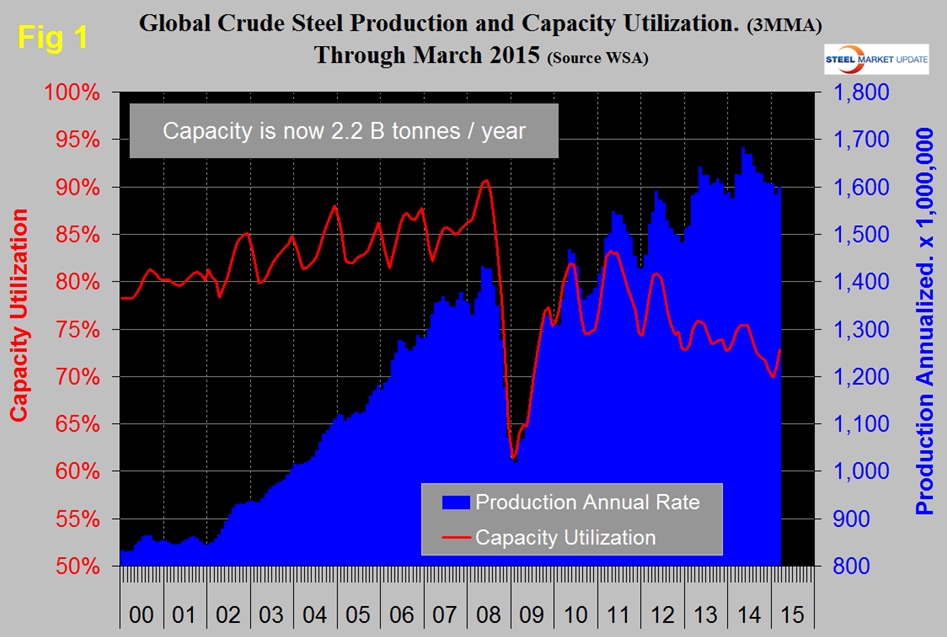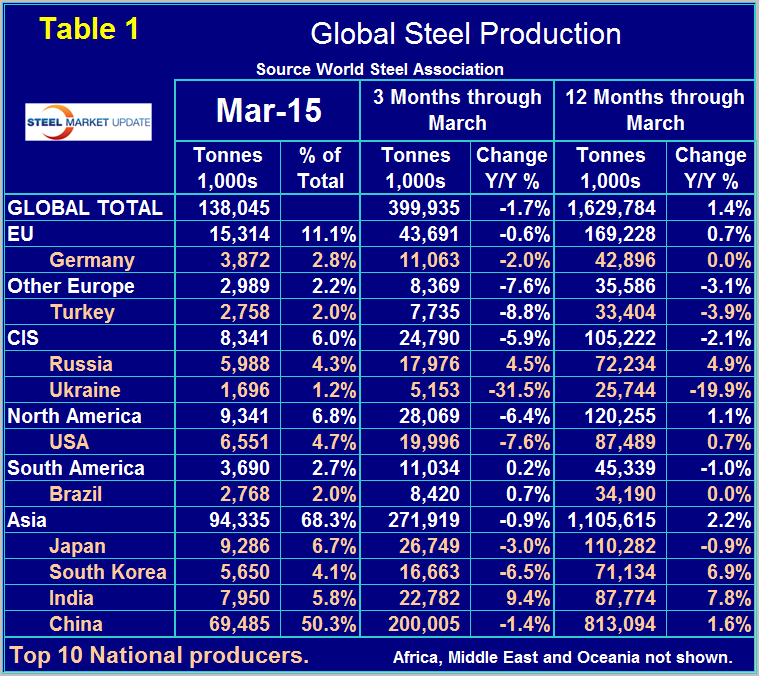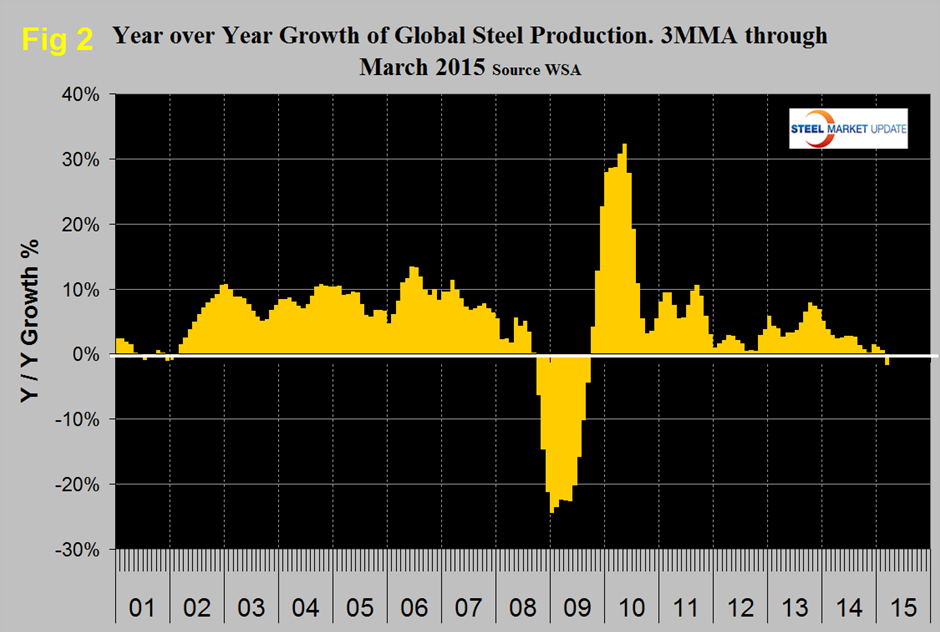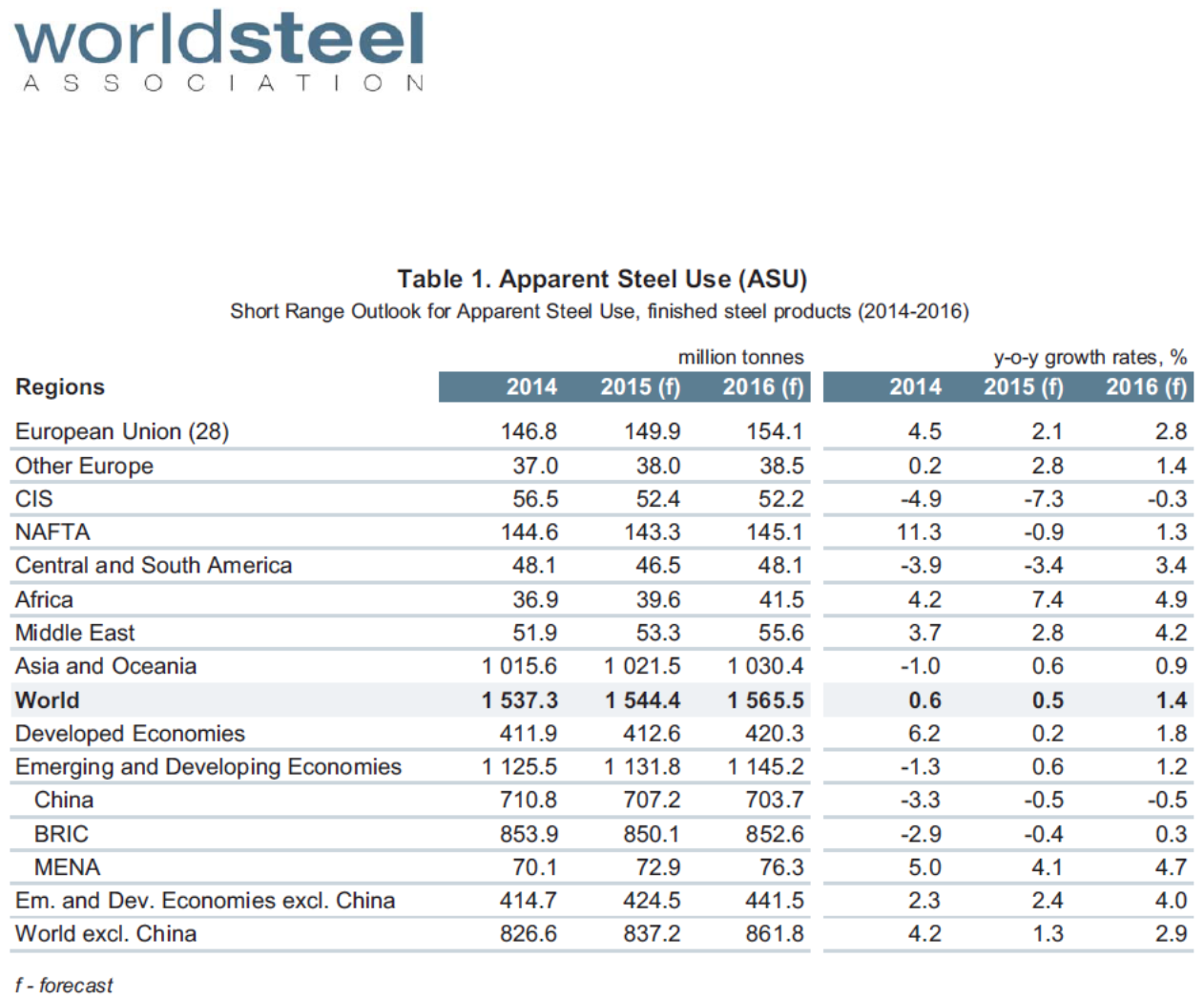Prices

April 21, 2015
Global Steel Production and Capacity Utilization in March 2015
Written by Peter Wright
Global steel production in 12 months through March totaled 1.626 billion tonnes with a capacity of 2.2 billion tonnes which yields a utilization for the 12 month period of 73.9 percent. China accounted for 50.3 percent of global production in March. Asia as a whole, including India, accounted for 68.3 percent of global production. Production in March on a tons/day basis was 4.45 million tonnes down from 4.56 in February. Total March production was 138,045 million tonnes.
If we look at the three month moving average and plot it over time, we see that there has been a significant decline in the second half of the year since, and including, 2010 which usually extends into February (Figure 1). This year the extension has continued into March and counting as on a y/y rolling 12 months basis 2015 is down by 1.7 percent. As production has increased each year since the recession, capacity utilization has decreased, the gap is widening.
Table 1 shows global production broken down into regions and also the production of the top ten nations in the single month of March and their share of the global total. It also shows the latest three months and twelve months production through March with year over year growth rates for each. Regions are shown in white font and individual nations in beige.
If the three month growth rate exceeds the twelve month we interpret this to be a sign of positive momentum and accelerating growth. The reverse is the case today for all regions except South America where Brazil is enjoying a small positive momentum. We came across a report on Venezuela that we include here as a commentary on that countries economic performance:
In 2014 Crude Steel Production in Venezuela fell to its lowest level in three decades, according to the annual report of the Ministry of Industries. The main reason was temporarily limited financing. Production at Sidor, Venezuela’s largest steel producer, which covers over 70 percent of the local steel market, fell by 33.5 percent to 1.03 million mt of liquid steel year-on-year. It is the lowest level since the 1980s. In late January, Sidor stopped production of slabs for at least a month due to shortage of limestone and dolomite supply. The production process was also affected by continuous workers strikes at the mill from end-April till end-August. During that period, Billet production halved and the mill was not able to ship rebar to the state affordable housing construction program known as Gran Mision Vivienda Venezuela.
India is counted as part of Asia which overall is down but India on its own has strong growth with positive momentum. On a three month moving average basis, global growth has contracted for four straight months from positive 1.4 percent in December to negative 1.7 percent in March. The growth rate in twelve months through March 2015 was 1.4 percent compared to twelve months through March last year. In the three months through March only India had a decent performance with a 9.4 percent year over year growth rate, China was down by 1.4 percent. North America was down by 6.4 percent in total with the US down by 7.6 percent, Canada up 0.4 percent and Mexico down 5.0 percent. The European Union was down by 0.6 percent and other Europe led by Turkey was down by 7.6 percent. The effect of the war in Ukraine is clear in the contraction of that country’s steel production. Figure 2 shows the 3MMA of the monthly year over year growth of global steel production which was negative in March for the first time since September 2009. It is evident that the crash of 2009 and the recovery of 2010 were more or less a wash at the global level of steel production followed by a significant slowdown since 2011.
On Monday this week the World Steel Association issued their Short Range Outlook forecast for apparent steel consumption in 2015 and 2016. Table 2. Note this is steel consumption, not crude steel production which is the main thrust of this piece.
They are forecasting a 0.5 percent growth this year followed by 1.4 percent in 2016. Based on this analysis by the WSA, NAFTA has by far the largest deterioration in demand between 2014 and 2015. Overall to us at SMU, this forecast looks optimistic on the global level and pessimistic for NAFTA. We read the global trends as worse that the WSA forecast suggests and the NAFTA trend as better. The recent decline in the price of oil, of iron ore and of the Baltic Index suggests that the global economy is weakening. Certainly there is a supply side to all three of those measures but it seems that demand is also down and suggests a further slowdown in global steel production in 2015.











